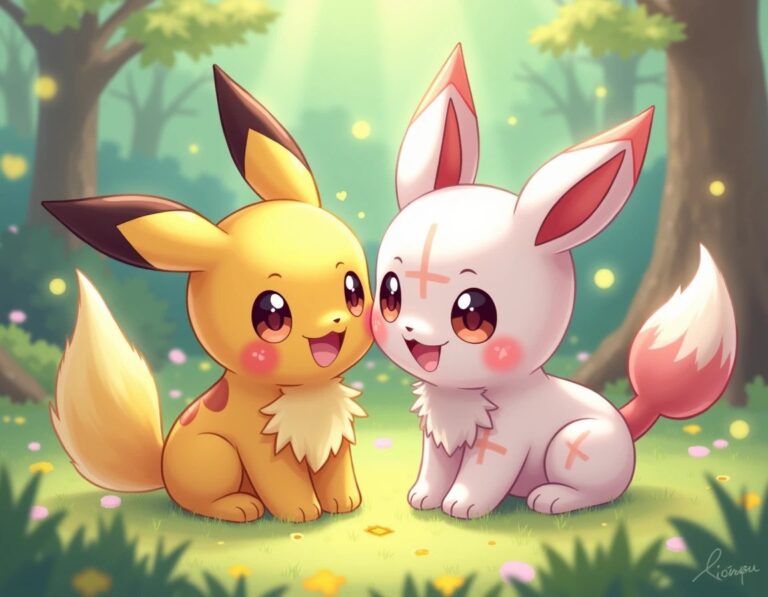femboy doujinshi
Want to know more in detail of femboy doujinshi?
Femboy Doujinshi: Exploring the World of Gender-Bending Manga
Femboy doujinshi, a subgenre of manga and anime, has gained popularity in recent years for its unique portrayal of gender-bending characters. In this article, we will delve into the world of femboy doujinshi, exploring its origins, themes, and impact on popular culture.
Femboy doujinshi refers to self-published works by amateur artists that feature characters who blur the lines of traditional gender roles. These characters, known as femboys, typically possess feminine traits while maintaining a male identity. The genre often explores themes of gender identity, sexuality, and self-expression in a creative and thought-provoking manner.
The Origins of Femboy Doujinshi
The roots of femboy doujinshi can be traced back to the Japanese manga and anime subculture, where artists began experimenting with gender-bending themes in their works. The term “femboy” itself is a combination of “feminine” and “boy,” reflecting the androgynous nature of the characters depicted in these doujinshi.
Themes in Femboy Doujinshi
Femboy doujinshi often explores themes of gender fluidity, identity, and acceptance. The characters in these works challenge societal norms and expectations, offering a fresh perspective on gender and sexuality. Through their stories, femboy doujinshi creators aim to promote inclusivity and diversity in the media.
Artistic Style and Representation
The art style of femboy doujinshi varies widely, ranging from cute and whimsical to dark and edgy. Artists use a combination of visual cues, such as clothing, hairstyles, and body language, to convey the gender identity of their characters. Representation of femboys in doujinshi is diverse, showcasing a wide range of personalities and experiences.
Impact on Popular Culture
Femboy doujinshi has made a significant impact on popular culture, influencing mainstream media and entertainment. The genre has gained a dedicated fan base both in Japan and internationally, with conventions and events dedicated to showcasing femboy-themed works. Through fan art, cosplay, and online communities, femboy doujinshi has created a space for fans to connect and celebrate their shared interests.
Exploring Gender Identity
One of the key themes in femboy doujinshi is the exploration of gender identity and expression. The characters in these works often grapple with questions of self-discovery and acceptance, challenging traditional notions of masculinity and femininity. By depicting diverse gender identities and experiences, femboy doujinshi opens up important conversations about gender diversity and inclusion.
Community and Support
The femboy doujinshi community provides a supportive and inclusive space for fans and creators alike. Through online forums, social media groups, and fan conventions, enthusiasts can share their love for the genre and connect with like-minded individuals. This sense of community fosters creativity and collaboration, leading to the creation of new and exciting femboy-themed works.
Representation in Media
While femboy doujinshi has gained a dedicated following, mainstream media has been slower to embrace gender-bending themes. However, recent years have seen an increase in representation of diverse gender identities in popular culture, reflecting a growing acceptance of non-binary and genderqueer individuals. Femboy doujinshi plays a crucial role in challenging stereotypes and promoting positive representation in the media.
Exploring Gender Fluidity
Gender fluidity is a central theme in femboy doujinshi, highlighting the fluid nature of gender identity and expression. The characters in these works often defy traditional gender norms, embracing a spectrum of identities and experiences. By celebrating diversity and individuality, femboy doujinshi encourages readers to question societal expectations and embrace their authentic selves.
Embracing Diversity and Inclusivity
Femboy doujinshi celebrates diversity and inclusivity, offering a platform for marginalized voices to be heard. The genre provides a safe space for creators to explore complex themes of gender and sexuality, challenging stereotypes and promoting acceptance. By showcasing a wide range of experiences and perspectives, femboy doujinshi contributes to a more inclusive and understanding society.
FAQs
What is the difference between femboy and otokonoko?
Femboy characters typically exhibit more masculine traits compared to otokonoko characters, who present as more feminine. While both genres explore gender-bending themes, femboy doujinshi focuses on characters with a mix of masculine and feminine qualities, whereas otokonoko works often feature characters who crossdress as girls.
Are femboy doujinshi considered LGBTQ+ representation?
Yes, femboy doujinshi can be seen as a form of LGBTQ+ representation, as they often depict characters who challenge traditional gender roles and identities. By exploring themes of gender fluidity and self-expression, femboy doujinshi contributes to a more diverse and inclusive media landscape.
How can I support femboy doujinshi creators?
You can support femboy doujinshi creators by purchasing their works, attending conventions and events where their art is showcased, and engaging with their content on social media. By showing your appreciation for their creativity and talent, you help to sustain the femboy doujinshi community and encourage further artistic expression.
Is femboy doujinshi appropriate for all audiences?
Fem
related term: femboy doujinshi




